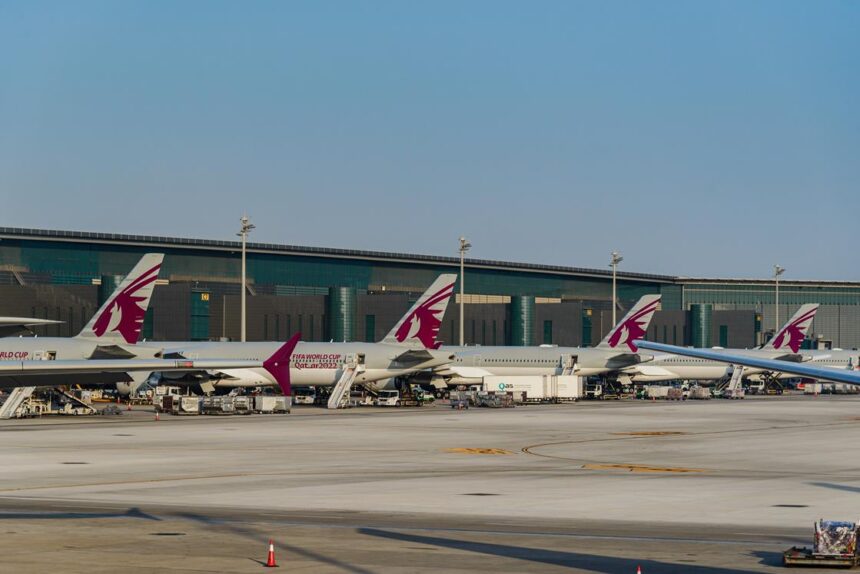The skies over the Middle East have become increasingly complex navigational territory as airlines worldwide scramble to adjust flight paths amid escalating regional tensions. Standing on the tarmac at Queen Alia International Airport in Amman last Tuesday, I watched as flight boards displayed a growing list of delays and cancellations—visible evidence of the invisible redrawing of air routes happening in real time.
“We’re making hourly risk assessments,” explained Rania Khalidi, a regional operations director for a major European carrier who agreed to speak with me between crisis meetings. “This isn’t just about avoiding active conflict zones anymore. We’re now planning for potential escalation scenarios across multiple countries simultaneously.”
The impact extends far beyond the immediate conflict zones. Airlines including Lufthansa, Air France, and British Airways have suspended flights to Tel Aviv, Beirut, and Amman, while carriers including Emirates and Qatar Airways have implemented extensive rerouting. According to data from flight tracking service FlightRadar24, over 400 commercial flights that would normally cross Israeli or Lebanese airspace have been diverted in the past week alone.
For passengers, the disruptions translate to tangible consequences. “My connection through Dubai added six hours to my journey,” said Michael Renton, an energy consultant I met at Brussels Airport as he prepared for a rerouted flight to Bangkok. “But nobody’s complaining given the alternatives.”
The economic toll is mounting rapidly. The International Air Transport Association (IATA) estimates that rerouting around conflict zones costs the global airline industry approximately $3.5 million daily in additional fuel and operational expenses. For carriers already recovering from pandemic-related losses, these unplanned costs arrive at a particularly challenging moment.
Beyond immediate operational challenges lies a more profound strategic dilemma for Middle Eastern carriers. Airlines including Emirates, Qatar Airways, and Etihad have built global networks centered on the geographical advantage of connecting East-West traffic through their Gulf hubs. Current airspace restrictions threaten this fundamental business model.
“The Gulf carriers face an existential question if these disruptions become normalized,” noted aviation analyst Samir Rafaat during our conversation in Dubai last month. “Their entire network strategy depends on efficient routings that are now increasingly compromised.”
Aviation insurance premiums have surged between 25-40% for carriers operating in the region, according to industry data from the Aviation Insurance Association. Some insurers have introduced exclusion zones that extend well beyond active conflict areas, effectively creating financial no-fly zones that exceed official airspace restrictions.
The human dimension of these disruptions extends to aviation professionals working under unprecedented stress. During my visit to a regional air traffic control center that requested anonymity, controllers described managing constantly changing flight paths while monitoring potential military activity.
“We’re trained for emergencies, not prolonged crisis management,” said one senior controller with 22 years of experience. “The psychological toll of maintaining this level of vigilance day after day isn’t sustainable.”
Historical precedents offer sobering context. Following the downing of Malaysia Airlines Flight 17 over Ukraine in 2014, the aviation industry implemented more stringent risk assessment protocols. Yet current events demonstrate how quickly even these enhanced safeguards can be overwhelmed by rapidly evolving conflicts.
For travelers, the immediate future promises continued uncertainty. The European Union Aviation Safety Agency (EASA) has issued multiple safety bulletins advising extreme caution throughout the region. Meanwhile, the U.S. Federal Aviation Administration maintains restrictive notices to air missions (NOTAMs) covering extensive areas of Middle Eastern airspace.
Perhaps most concerning for long-term regional stability is how aviation disruptions reflect broader economic disconnection. Speaking with commerce officials in Jordan, I found growing alarm about how air transport limitations could undermine decades of economic integration efforts.
“When airlines can’t fly, it’s not just tourism that suffers,” explained Jordanian Chamber of Commerce representative Khalil Hamoudi. “It’s business relationships, investment, and regional cooperation that get damaged in ways that take years to rebuild.”
As tensions show no immediate signs of abating, the aviation industry faces a prolonged period of adaptation. Airlines are developing contingency plans that include potential long-term network restructuring and capacity reallocation away from the Middle East to more stable markets.
What remains clear from conversations across the region is that aviation disruptions serve as both symptom and amplifier of broader instability. As one veteran pilot told me before departing on a rerouted flight from Dubai to London, “The skies reflect what’s happening on the ground—and right now, neither looks particularly clear.”






